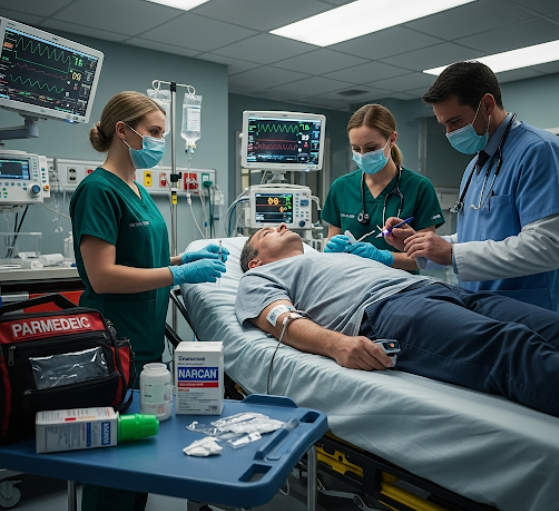Overview
Synthetic opioids overdose occurs when a person consumes a toxic or excessive amount of synthetic opioid drugs, leading to life-threatening effects on breathing, heart function, and consciousness. Synthetic opioids, such as fentanyl, tramadol, and methadone, are far more potent than natural opiates and can cause rapid respiratory depression. In Korea, the growing concern over illicit synthetic opioid trafficking and misuse has led to increased public health vigilance and emergency response strategies.
What is Synthetic Opioids Overdose?
Synthetic opioids overdose is a medical emergency that happens when high levels of synthetic opioid drugs accumulate in the body, overwhelming the brain’s ability to regulate vital functions like breathing and heart rate. These substances can be prescribed for pain relief, but illicitly produced forms—especially fentanyl—are often mixed with other drugs, increasing the risk of accidental overdose. Even a small amount can be fatal.
Symptoms
- Extreme drowsiness or unresponsiveness
- Slow or irregular breathing (respiratory depression)
- Constricted (pinpoint) pupils
- Cold, clammy skin
- Bluish lips or fingertips (cyanosis)
- Weak pulse or low blood pressure
- Loss of consciousness or coma
Causes
- Intentional or accidental ingestion of high doses of prescription synthetic opioids
- Illicit drug use, often involving fentanyl-laced substances
- Mixing synthetic opioids with alcohol or sedatives
- Misuse of prescribed pain medications beyond the recommended dose
- Lack of awareness about the potency of synthetic opioids
Risk Factors
- History of opioid use disorder
- Use of illicit street drugs, particularly heroin or counterfeit pills
- Chronic pain patients with high-dose prescriptions
- Mixing opioids with other central nervous system depressants
- Lack of access to harm reduction education
- Previous history of overdose
Complications
- Severe brain injury due to oxygen deprivation
- Respiratory arrest and cardiac arrest
- Aspiration pneumonia from vomiting while unconscious
- Long-term neurological deficits
- Death if untreated promptly
Prevention
- Avoiding the use of illicit drugs or pills from unverified sources
- Following prescribed dosages strictly for pain medications
- Education on the dangers of synthetic opioids, especially fentanyl
- Keeping naloxone (opioid reversal medication) accessible for high-risk individuals
- Participating in opioid dependence treatment programs
- Public awareness campaigns about counterfeit drugs
Treatment Options in Korea
In Korea, synthetic opioid overdoses are treated as a medical emergency. Emergency responders and hospitals follow rapid intervention protocols that include:
- Immediate naloxone administration to reverse opioid effects, available in emergency departments and carried by some first responders
- Airway management and oxygen therapy to support breathing
- Intravenous fluids to stabilize blood pressure and circulation
- Cardiac monitoring for heart rhythm abnormalities
- Intensive care unit (ICU) admission for severe cases
- Referral to addiction treatment services, such as medication-assisted treatment (MAT) with buprenorphine or methadone, and counseling programs
Korean public health authorities are also expanding education, drug screening, and harm reduction initiatives to prevent future overdose incidents.













